The Martinitoren: a Groningen Landmark
About a year ago I wrote a post about Groningen, the small city where I live. I mapped out a route that started at the train station and wound its way through the city, ending at the landmark Martinitoren.
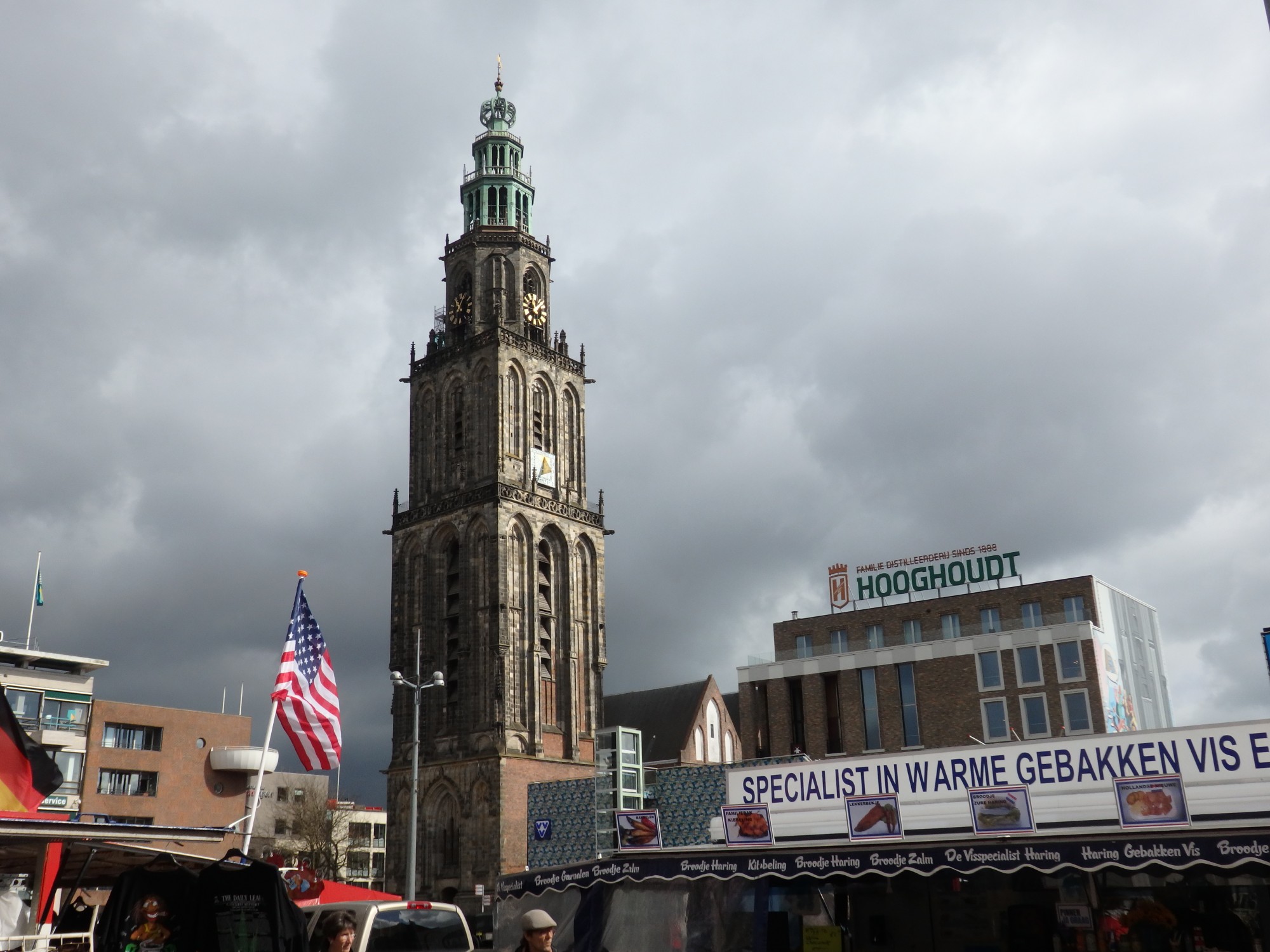
The Martinitoren
Today, for the first time in several years, I climbed the Martinitoren, and it was well worth the effort.
The “martini” in the Martinitoren does not refer to the drink, but rather to Sint Martinus (Saint Maarten). Toren just means “tower.” While there were two versions of the tower even earlier – both burned down – this one was completed in 1482. The tower used to be 127 meters high, but after a fire—set to celebrate a military victory … oops!—destroyed 69 meters of it, it was restored in 1627 to its current 97 meters.
Unlike many buildings around it, both the Martinitoren and the church next to it, the Martinikerk (St. Maarten’s church), survived World War II relatively unscathed, though some shrapnel damage is visible.
The ever-so-slightly leaning sandstone and red brick Martinitoren is the bell tower for the Martinikerk. It contains a carillon with 52 bells, some of which are enormous bass bells that are 400 years old.
Make sure to also read my article about things to do and see in Groningen province!
Climbing the Martinitoren
Buy your entrance ticket online. This will admit you through the revolving gate at the base of the tower.
Climbing the tower is not for anyone with claustrophobia or a fear of heights. The spiral stairs are brick and very narrow. The only handrail is a thick rope attached to the central column. If anyone needs to pass in the other direction … just squeeze over to let them by.
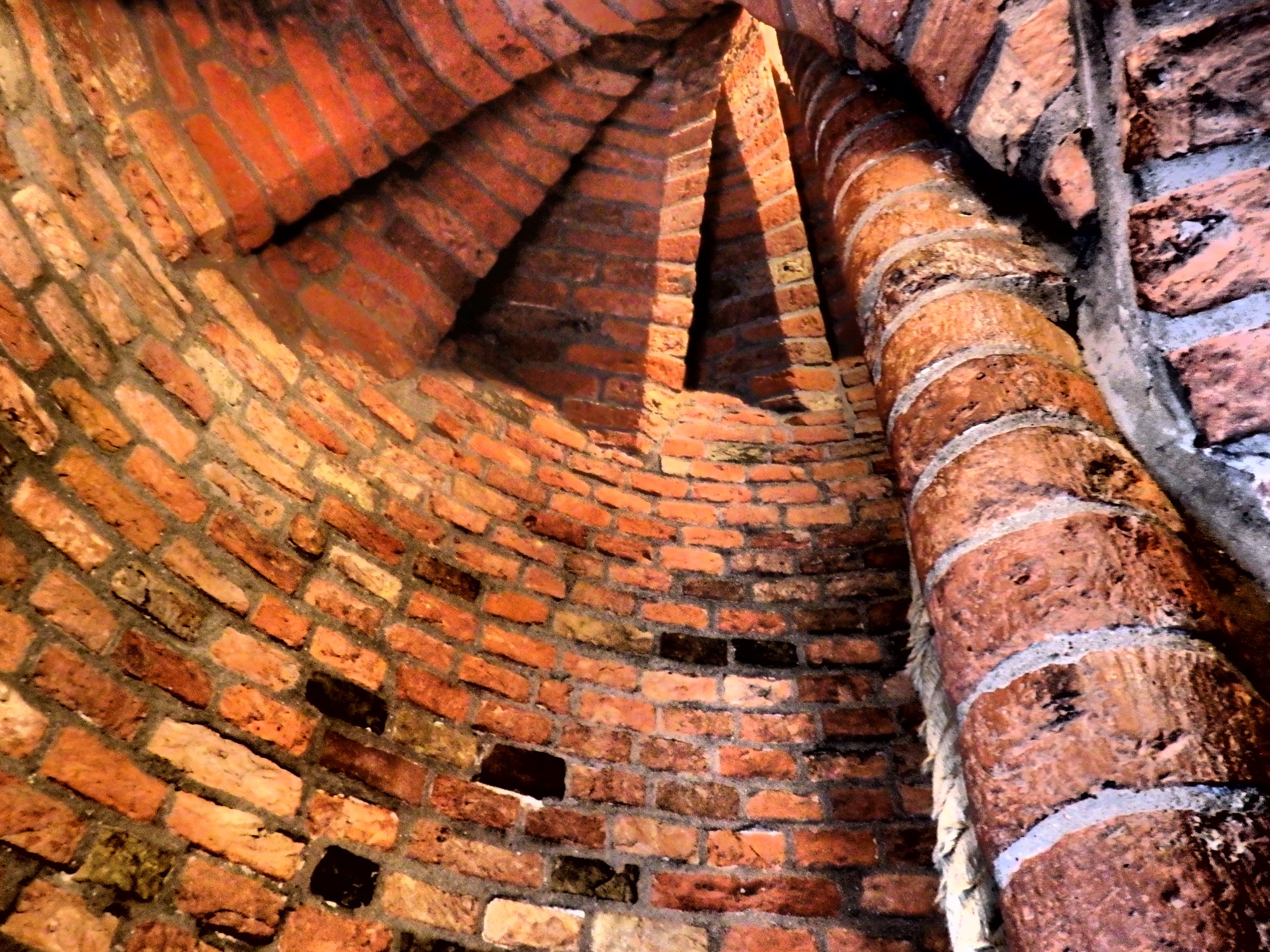
At the first landing you can look down to the vaulted base you just entered through, and you can look up to see the internal construction of the tower: plain brick walls and enormous wooden beams supporting the bells above. Push the button next to the internal window to see how the arches of the church next door are constructed.
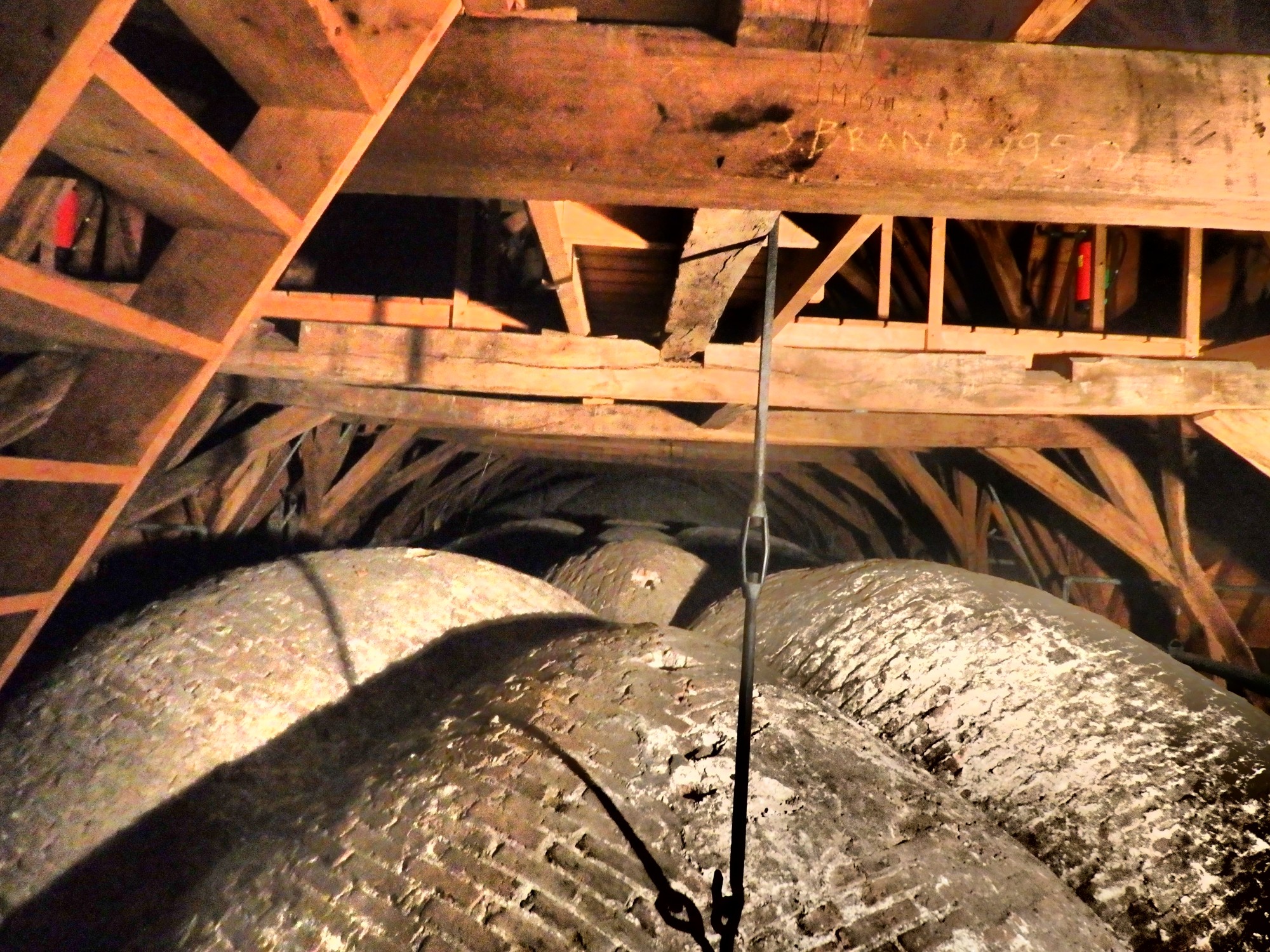
The second landing also isn’t for anyone who’s afraid of heights: the floor here is just boards over beams, and you can see a long way down through the spaces between the boards. Stop here and admire the bells. The largest—Salvator—weighs 7850 kilograms (17,306 lbs) and measures more than two meters (six feet) across. A small panel allows you to hear the bells; push each button and hear a recording. The real bells are still played sometimes.
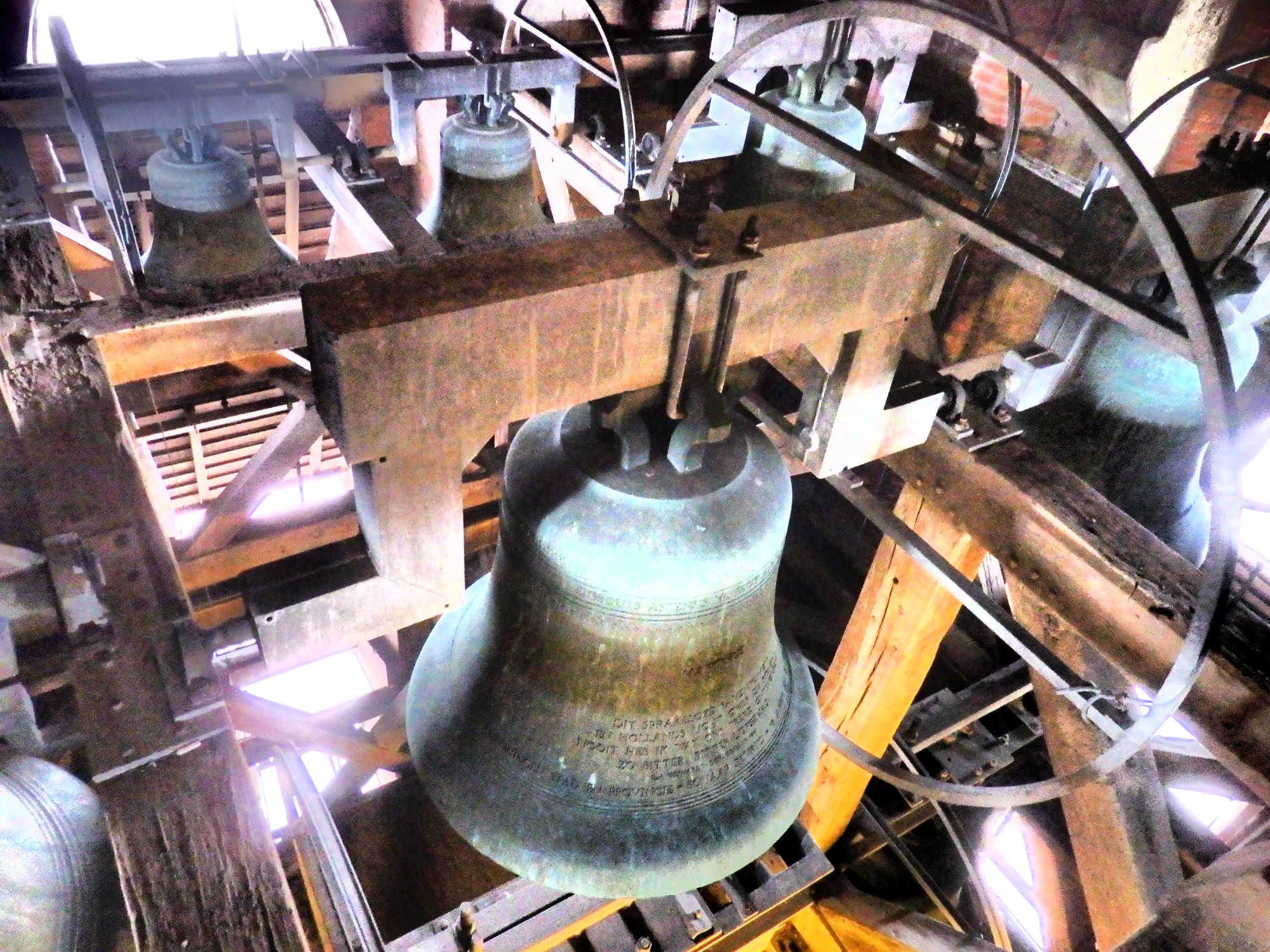
The third landing is as far as you’re allowed to climb: 251 steps. Inside, the spaces between the boards seemed even scarier to me, but here you can also go outside to see the view. Fifty-six meters up, you can see all of Groningen from here and, depending on the weather, much further than that.
The view from the Martinitoren
Above you, notice the gargoyles used to drain water, and the huge sundial. You can also spot what looks like very old graffiti carved into the sandstone walls.
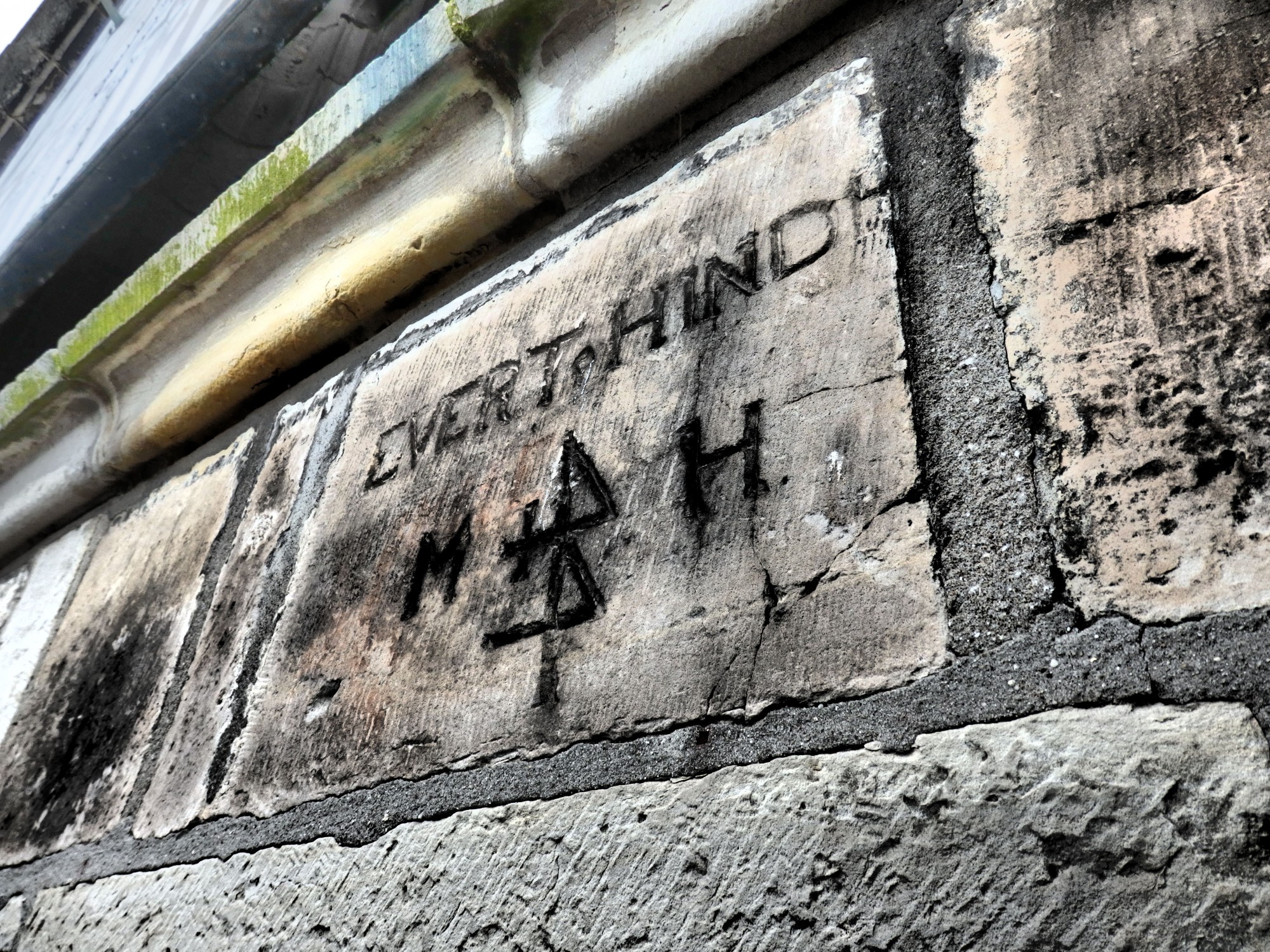
Now look out at the city. Nearby, below you, is the Grote Markt, the central square of Groningen. One row of lovely centuries-old buildings lines one side, now used as pubs and restaurants. The stadshuis (city hall) stands in the middle with the Golden Age goudkantoor behind it. The rest of the buildings around the Grote Market are newer, replacing buildings destroyed in the Battle of Groningen between the Canadians and the Germans in April 1945.
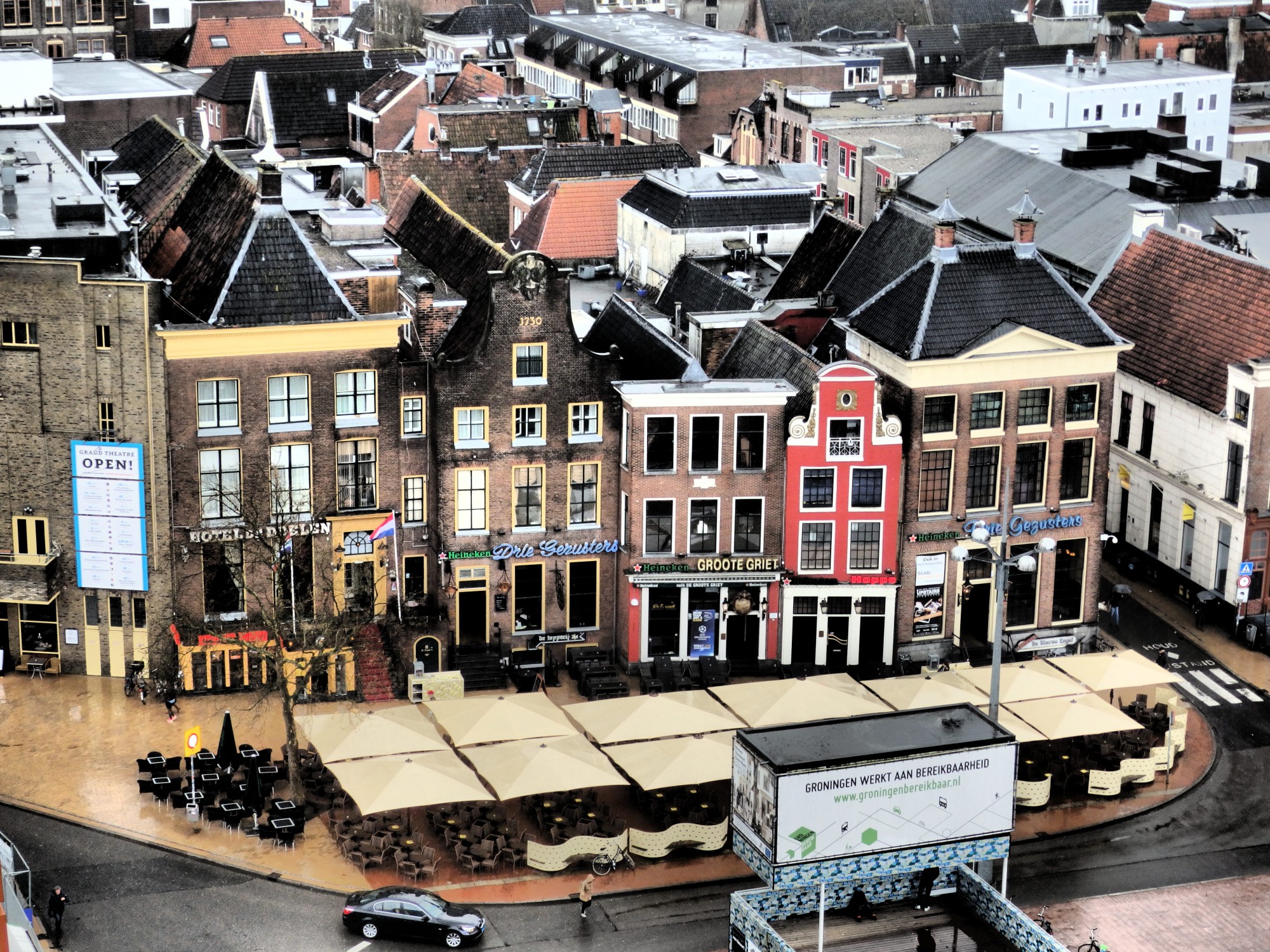
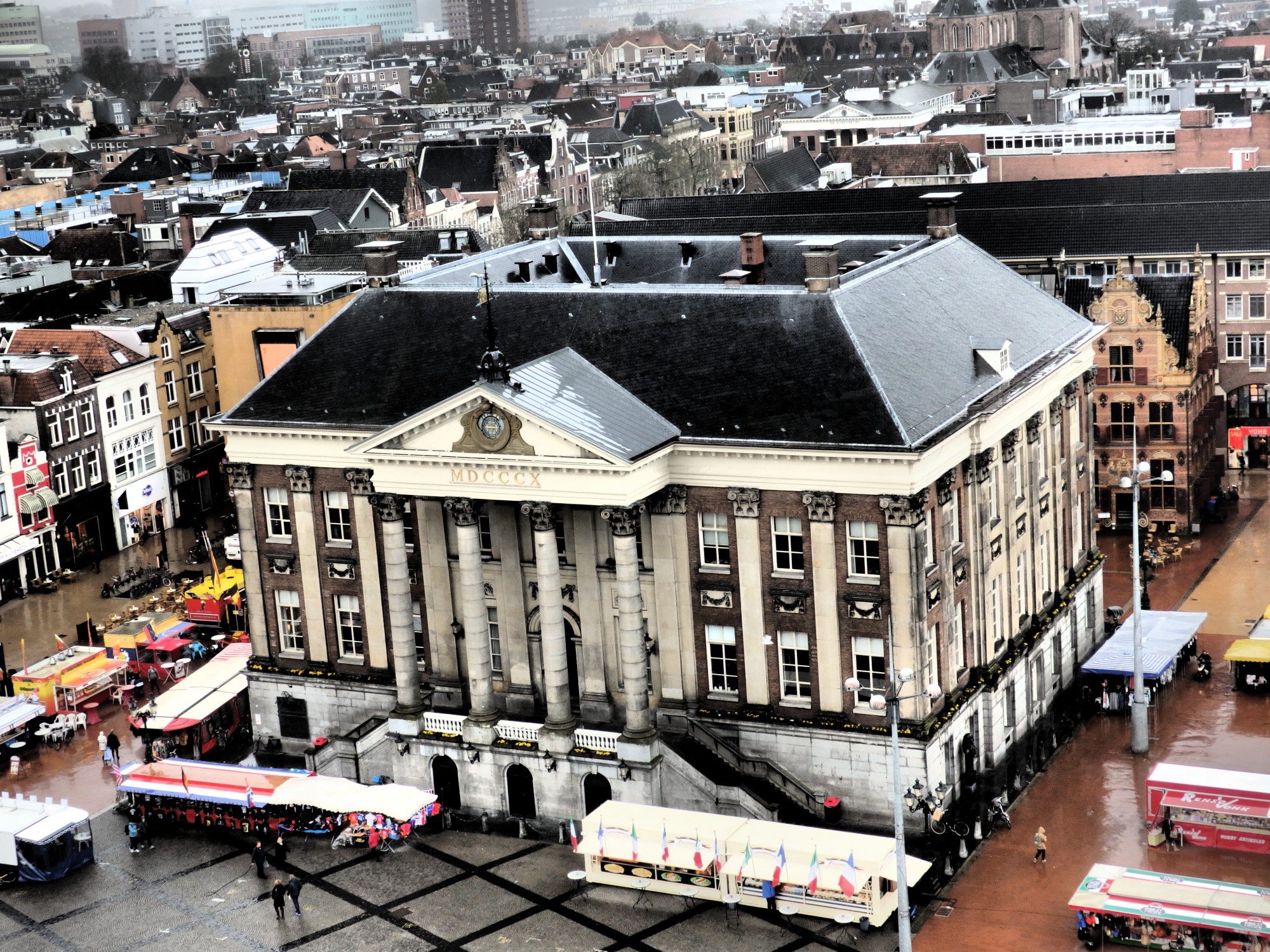
On the other side of the tower look down to see the green open space called Martinikerkhof, lined with historic buildings that survived the war.
Looking out into the distance you’ll get a sense of how completely flat Groningen province is, and also see how changeable the weather is. When I was admiring the view, parts of the city were shrouded in rain while other parts glittered in the sun.

After you climb the Martinitoren
Once you’ve climbed back down, take a peek inside the Martinikerk if it’s open: while it looks like an original door is inside the entrance to the tower, the entrances that are actually used are around the side.
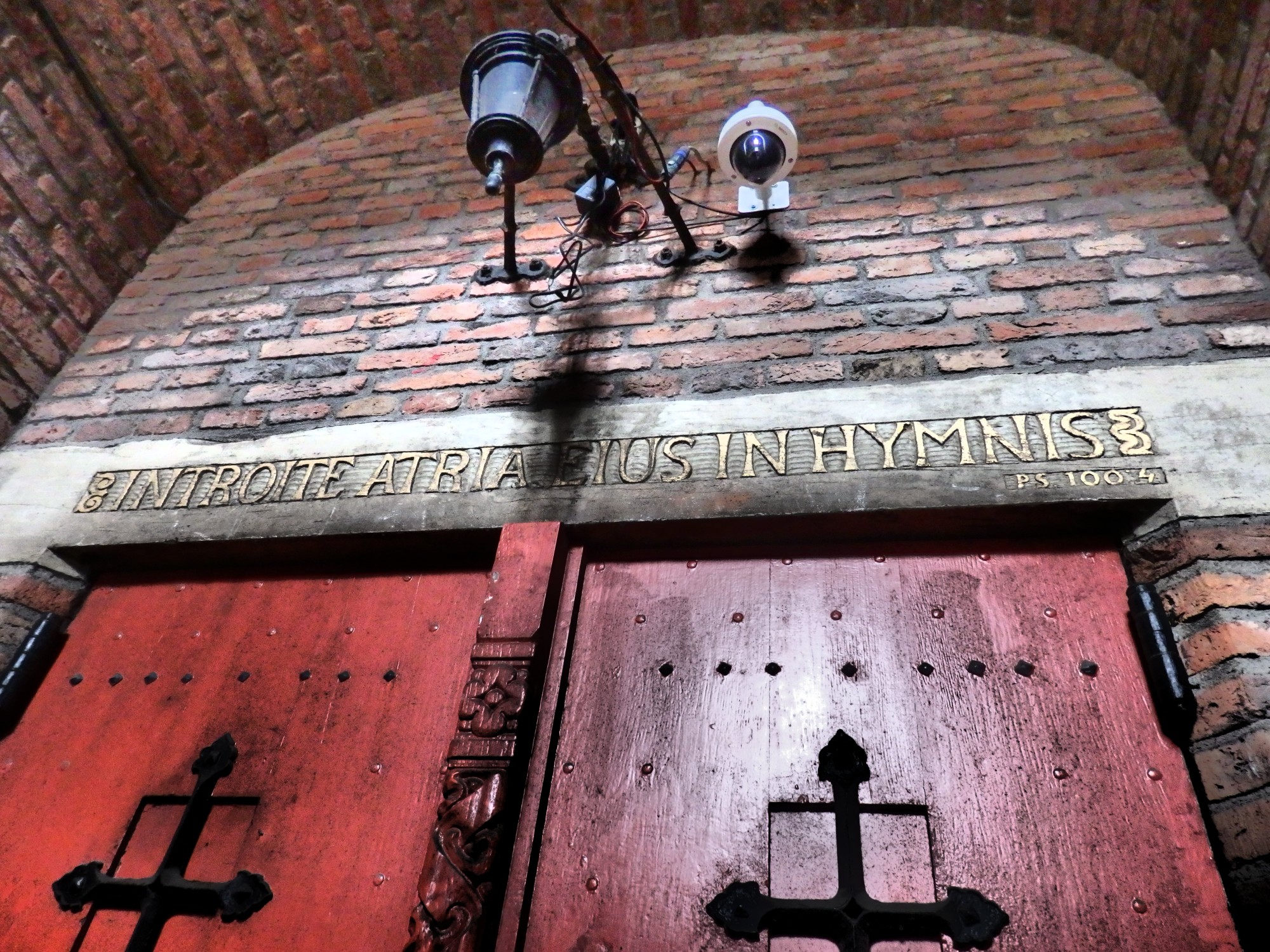
Don’t expect a Notre Dame or Westminster Abbey here: when the Reformation hit Groningen, it hit in a big way, and every bit of ornamentation was removed from this once-Catholic church. It’s extremely plain, but interesting nevertheless in terms of the architecture. You can also spot the gravestones of the “stinking rich” set into the floor (Do you know the origin of that phrase? Pretty grisly!). Mostly the church is used for events nowadays, but services are still held on Sundays.
Continue your walk around the church and turn left at its other end into Martinikerkhof. Some lovely older buildings remain and the open square offers a quiet stroll away from the careening bicycles of the Grote Market. You can even stay here on this square; one of the buildings has been turned into a hotel.
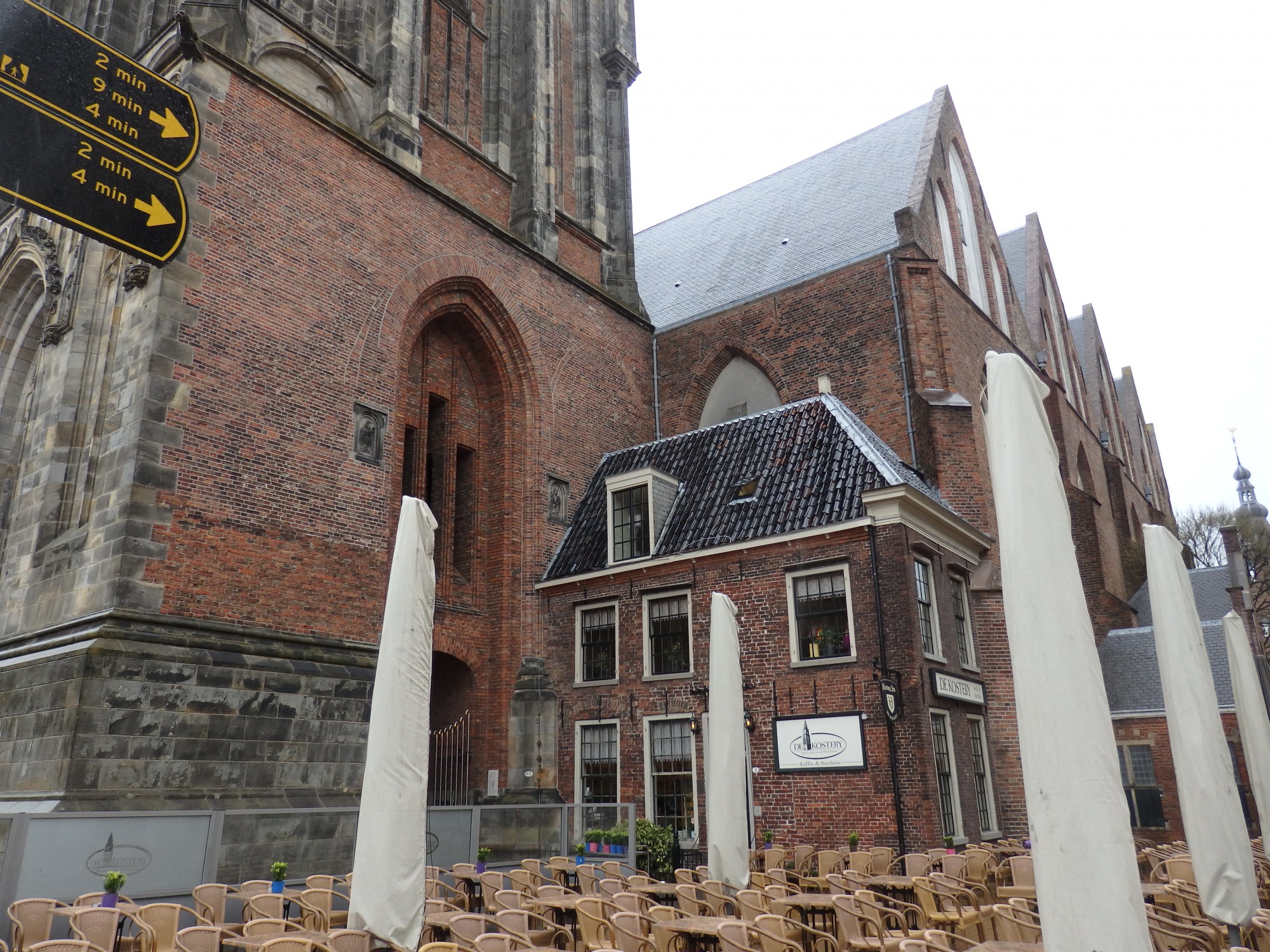
A natural stop after climbing the Martinitoren is the Kostery café at its base. I love how this house sits tucked into the angle between the tower and the church. It used to be the sexton’s house, but now it’s a pleasant café, and if you’re lucky and the sun is out, it’s a great place to stop for a drink at one of the outdoor tables.
Have you ever been to Groningen? Did you climb the Martinitoren? What else would you recommend doing in Groningen?
(Last edited July 6, 2023)
My travel recommendations
Planning travel
- Skyscanner is where I always start my flight searches.
- Booking.com is the company I use most for finding accommodations. If you prefer, Expedia offers more or less the same.
- Discover Cars offers an easy way to compare prices from all of the major car-rental companies in one place.
- Use Viator or GetYourGuide to find walking tours, day tours, airport pickups, city cards, tickets and whatever else you need at your destination.
- Bookmundi is great when you’re looking for a longer tour of a few days to a few weeks, private or with a group, pretty much anywhere in the world. Lots of different tour companies list their tours here, so you can comparison shop.
- GetTransfer is the place to book your airport-to-hotel transfers (and vice-versa). It’s so reassuring to have this all set up and paid for ahead of time, rather than having to make decisions after a long, tiring flight!
- Buy a GoCity Pass when you’re planning to do a lot of sightseeing on a city trip. It can save you a lot on admissions to museums and other attractions in big cities like New York and Amsterdam.
Other travel-related items
- It’s really awkward to have to rely on WIFI when you travel overseas. I’ve tried several e-sim cards, and GigSky’s e-sim was the one that was easiest to activate and use. You buy it through their app and activate it when you need it. Use the code RACHEL10 to get a 10% discount!
- Another option I just recently tried for the first time is a portable wifi modem by WifiCandy. It supports up to 8 devices and you just carry it along in your pocket or bag! If you’re traveling with a family or group, it might end up cheaper to use than an e-sim. Use the code RACHELSRUMINATIONS for a 10% discount.
- I’m a fan of SCOTTeVEST’s jackets and vests because when I wear one, I don’t have to carry a handbag. I feel like all my stuff is safer when I travel because it’s in inside pockets close to my body.
- I use ExpressVPN on my phone and laptop when I travel. It keeps me safe from hackers when I use public or hotel wifi.



I really feel that I just finished a great tour of your city, Rachel. Such a great sense of history from many centuries ago and the recent past of WWII. And, thanks to you, I kind of fell down the rabbit hole of the internet following the origin of the phrase “stinking rich!” 🙂
Haha! I wondered if I should explain it but thought it was more fun this way!
I love these old towns 🙂 There’s so much history in their buildings! The Martinitorren reminds me of the Civil Tower in Bergamo, where I went last October. Unfortunately in my case, it was pouring the day of our visit, so we couldn’t stay long. But the views were beautiful, even if half hidden in the low cloud!
In places like Holland, you can often just wait a few minutes and the weather changes, so you can’t let a bit of rain stop you!
Thank you so much for the informative story. I was born in Groningen but emigrated to Australia in 1952. My husband & I recently visited where I lived and we stayed in a hotel in the city square. We didn’t climb the tower but after reading your story we feel like we did. So many good stories and memories.
Hi Tanya, glad you liked it! It must have been really special to come back here! Some of my husband’s relatives emigrated there in the 50s too, part of that huge wave that left after the war.